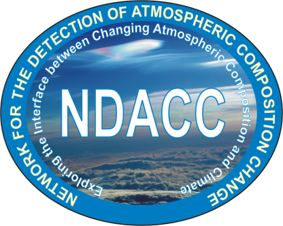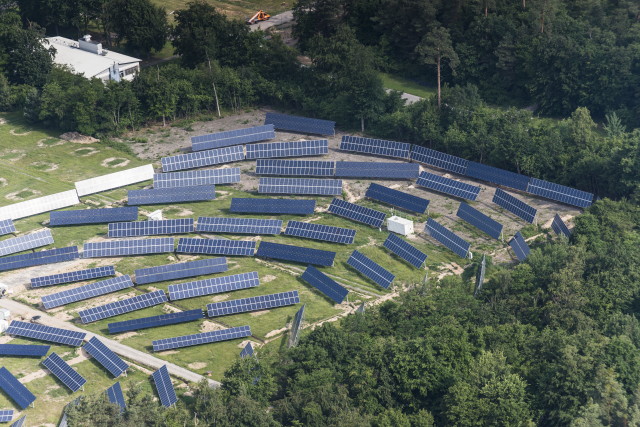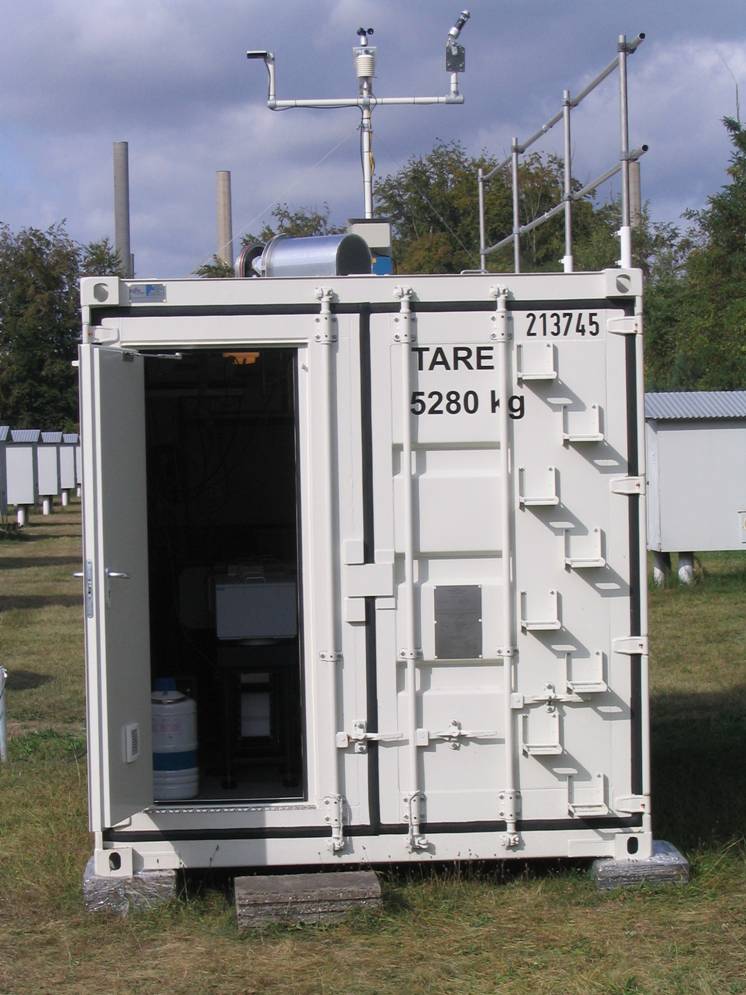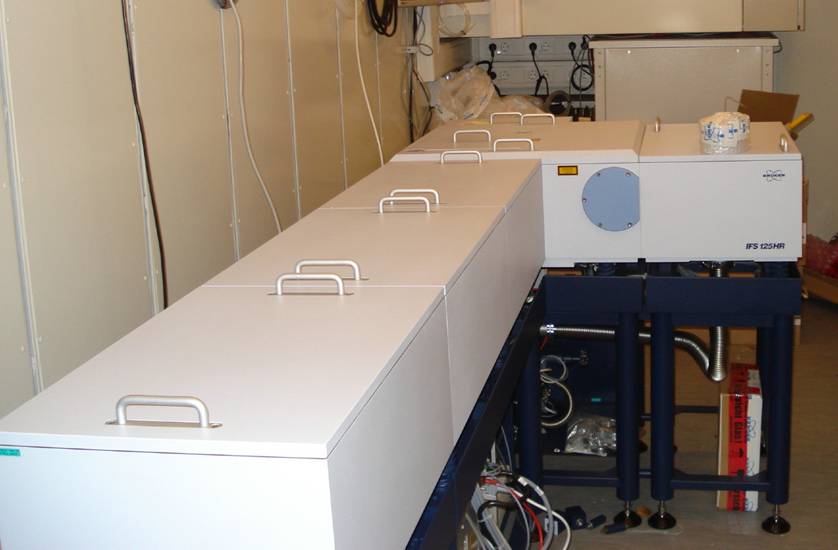KIT Campus North, Karlsruhe, Germany (49.1 N, 8.5 E, 110 m a.s.l.)



At Karlsruhe site, high- as well as low-resolution FTIR spectrometers are operated. The high-resolution instrument is operated in a container (Fig. 1), and serves the NDACC (Network for the Detection of Atmospheric Composition Change) and TCCON (Total Column Carbon Observation Network) networks. The compact low-resolution FTIR spectrometer Bruker EM-27 is operated in the framework of the COCCON (COllaborative Carbon Column Observing Network) network. This COCCON type instrument allows us to measure greenhouse gases (GHG) with high precision. At Kalrsruhe site, the reference COCCON instrument is operated and all spectrometers within COCCON have been validated with respect to it.

Fig. 1: Location of the FTIR container in between a set of photovoltaic (PV) modules (since 2014).
In 2009 a new FTIR container with a Bruker® IFS 125HR has been set up on the Campus North of KIT. The container has been made by Impres® GmbH, Bremen, and is prepared for automatic operation. The spectrometer is operated mainly in the near infrared (NIR) spectral domain to measure CO2 by remote sensing as precise as possible.

Fig. 2: FTIR container on Campus North of KIT Karlsruhe (2009).
An FTIR is operated at Karlsruhe
- to measure precisely greenhouse gases, mainly CO2, CH4 and N2O;
- to improve the instrumentation and measurement accuracy;
- to compare data with in-situ measurements made on a tall tower at the site;
- to validate satellite data. Because of the flat terrain the site is favorable to do so.

Fig. 3: FTIR spectrometer with high spectral resolution inside container.
